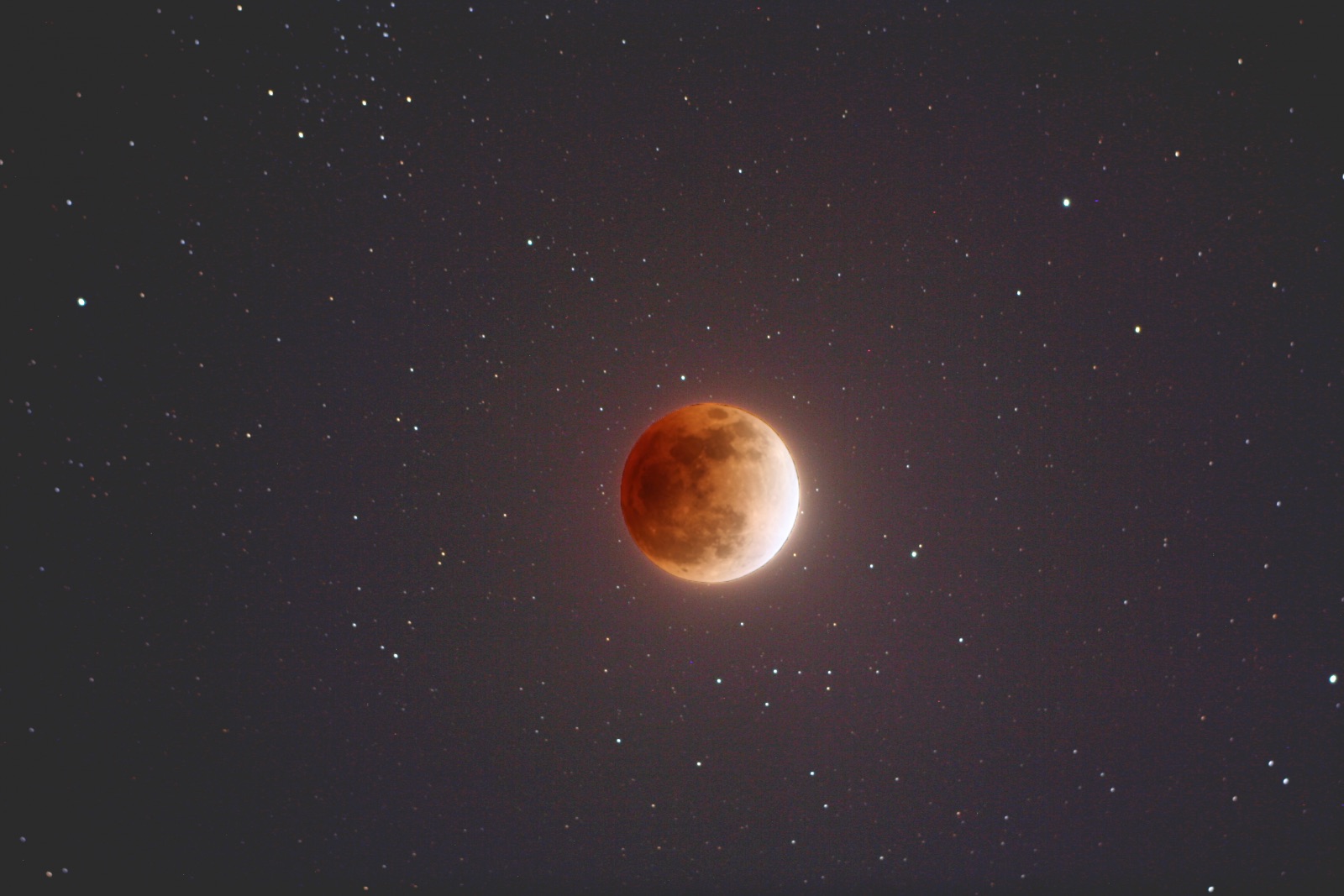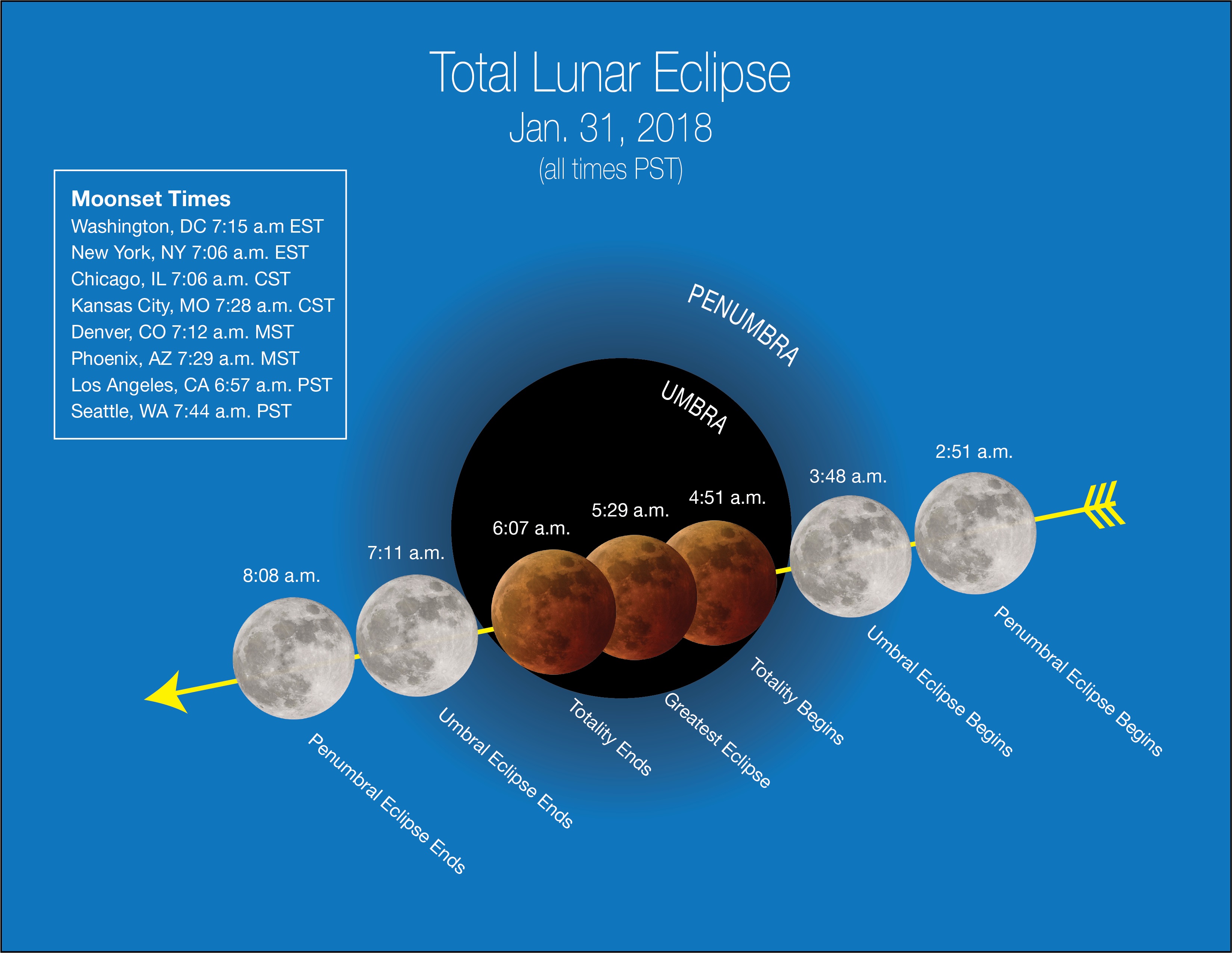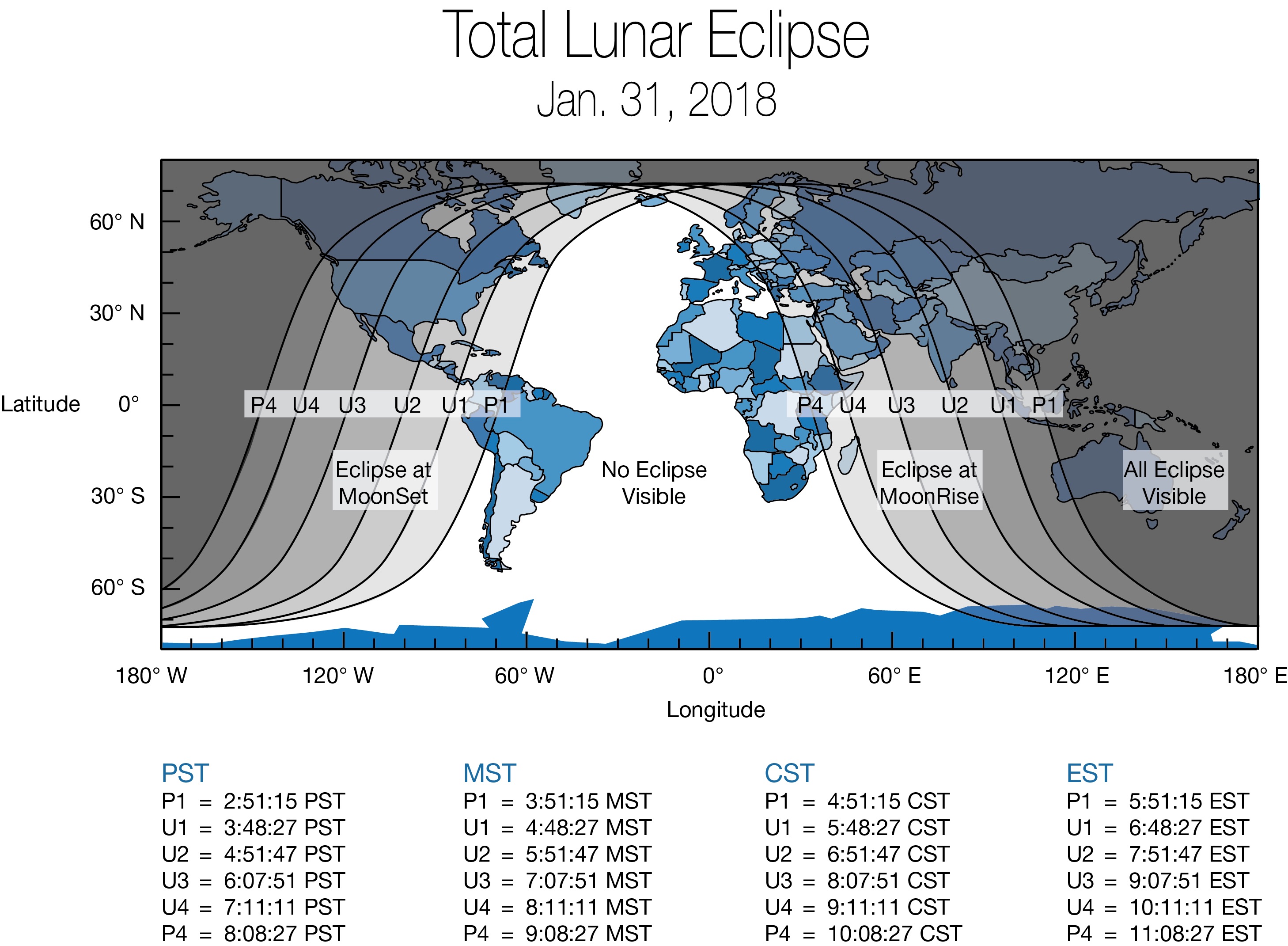The Best Places to See the Super Blue Blood Moon Eclipse of Jan. 31
Skywatchers in Alaska, the Hawaiian islands and the western part of North America will have the best view of the rare "Super Blue Blood Moon" in the early morning of Jan. 31.
This spectacular lunar event features the second full moon of the month, also known as a Blue Moon. The event will coincide with a total lunar eclipse, which is often referred to as a "blood moon" because the moon turns a reddish or copper color when it passes through Earth's shadow.
What's more, the Jan. 31 full moon occurs during perigee — the moon's closest approach to Earth in a single orbit, which means that its diameter will appear about 7 percent larger and 14 percent brighter than usual, making it a supermoon. This is the first time in more than 150 years that the three lunar events will coincide, according to a statement from NASA. [Super Blue Blood Moon 2018: When, Where and How to See It]
"For the [continental] U.S., the viewing will be best in the West," Gordon Johnston, program executive and lunar blogger at NASA headquarters in Washington, said in the statement. "Set your alarm early and go out and take a look."

On Jan. 31, the Super Blue Blood Moon will be visible before sunrise in North America, Alaska and Hawaii. However, viewers in the Middle East, Asia, eastern Russia, Australia and New Zealand will see the Super Blue Blood Moon during moonrise in the morning, according to the NASA statement.
Specifically, skywatchers on the West Coast of the United States will see the lunar eclipse begin at 3:48 a.m. PST. Totality will start around 4:51 a.m. PST and last until 6:05 a.m. PST. Viewers in this area will experience the lunar eclipse from start to finish, as long as it isn't a cloudy morning, according to the statement.

For viewers in New York, Washington and other areas of the U.S. East Coast, the window of opportunity to see the lunar eclipse won't be as large.
Get the Space.com Newsletter
Breaking space news, the latest updates on rocket launches, skywatching events and more!
"Unfortunately, eclipse viewing will be more challenging in the Eastern Time zone," Johnston said in the statement. "The eclipse begins at 5:51 a.m. E[S]T, as the moon is about to set in the western sky, and the sky is getting lighter in the east."
The eclipse won't be as noticeable to viewers on the East Coast because the moon is expected to enter only the outer part of Earth's shadow at 5:51 a.m. EST. It is not until 6:48 a.m. EST that the darker part of Earth's shadow will begin to blanket the moon and create the blood-red tint — and the moon will set less than a half-hour later, according to the statement.

"So your best opportunity if you live in the East is to head outside about 6:45 a.m. [EST] and get to a high place to watch the start of the eclipse — make sure you have a clear line of sight to the horizon in the west-northwest, opposite from where the sun will rise," Johnston said.
Viewers in the Central Time Zone may have a better opportunity than those on the East Coast. The lunar eclipse will begin around 4:51 a.m. CST, when the moon is higher in the sky. At this time, the moon will pass through the lighter part of Earth's outer shadow, or the penumbra. The moon will appear to be a blood-red color to viewers around 6:15 a.m. CST, and the view will remain until 7:00 a.m. CST, when the sun rises, according to the NASA statement.
"So if you live in Kansas City or Chicago, your best viewing will be from about 6:15-6:30 a.m. [CST]," Johnston said. "Again, you'll have more success if you can go to a high place with a clear view to the West."
The lunar eclipse will begin in the Rocky Mountain region around 4:48 a.m. MST, as the darker part of Earth's inner shadow blankets the moon. Viewers in this area will see the eclipse peak around 6:30 a.m. MST until 7:00 a.m. MST, when the moon will set, according to the statement.
Editor's note: If you capture an amazing photo of video of the Jan. 31 total lunar eclipse and would like to share it with Space.com for a story or gallery, send images and comments to: spacephotos@space.com.
Follow Samantha Mathewson @Sam_Ashley13. Follow us @Spacedotcom, Facebook and Google+. Original article on Space.com.
Join our Space Forums to keep talking space on the latest missions, night sky and more! And if you have a news tip, correction or comment, let us know at: community@space.com.

Samantha Mathewson joined Space.com as an intern in the summer of 2016. She received a B.A. in Journalism and Environmental Science at the University of New Haven, in Connecticut. Previously, her work has been published in Nature World News. When not writing or reading about science, Samantha enjoys traveling to new places and taking photos! You can follow her on Twitter @Sam_Ashley13.









